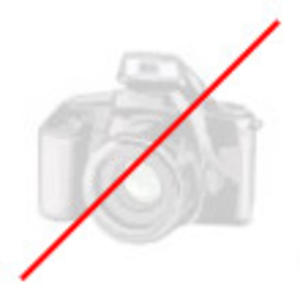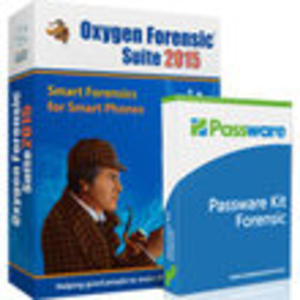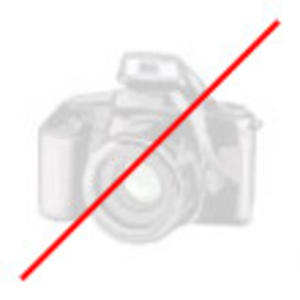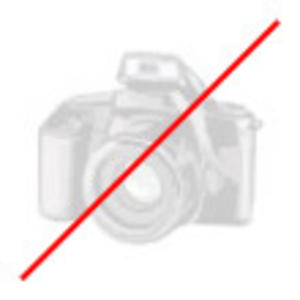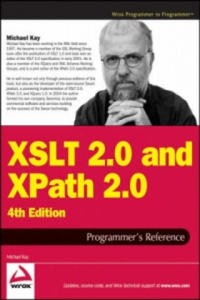ukarola a place to call home series 1 3 complete dvd 8708504
- znaleziono 7 produktów w 4 sklepach
Spalona Żywcem Wyd. Kieszonkowe - Souad
Książki & Multimedia > Książki
Opis - Pierwsze na świecie świadectwo ofiary zbrodni honorowej. Miała siedemnaście lat i zakochała się: zhańbiła rodzinę. Więc rodzina wydała na nią wyrok śmierci... Pokochała go pierwszą miłością. Myślała, że się z nią ożeni. Ale ukochany zniknął, a ona odkryła, że jest w ciąży. A w jej świecie to najcięższa zbrodnia... W zapomnianej przez Boga wiosce w Cisjordanii kobiety są warte mniej niż zwierzęta domowe. Tu mężczyzna jest panem życia i śmierci żony, córki, siostry. Brat może bezkarnie zabić siostrę, matka - córkę, kolejną bezużyteczną dziewczynkę, jaka się urodzi. Tu kobiecie odbiera się godność, a nawet życie zgodnie z odwiecznym obyczajem i uświęconą tradycją. A śmierć jest karą dla dziewczyny, która zhańbi rodzinę. Tak jak Souad. Wyrok wydaje jej ojciec. Szwagier dokonuje egzekucji. Oblewa Souad benzyną i podpala... SOUAD przeżyła - cudem, ale rodzina usiłowała zabić ją nawet w szpitalu. Na zawsze jednak pozostanie straszliwie okaleczona - na ciele i duszy. I wciąż musi się ukrywać; dopóki żyje, jej rodzinę okrywa hańba. Spalona żywcem, opublikowana pod pseudonimem szokująca opowieść o piekle, jakim było jej dzieciństwo i młodość, stała się międzynarodowym bestsellerem. Wydana w 37 w krajach książka przerywa tabu milczenia wobec istniejącej nadal w krajach muzułmańskich barbarzyńskiej tradycji. Nieludzkiego obyczaju, prawa mężczyzn, na mocy którego co najmniej pięć tysięcy kobiet pada co roku ofiarą zbrodni honorowej. Nazwa - Spalona Żywcem Wyd. Kieszonkowe Autor - Souad Oprawa - Miękka Wydawca - Amber Kod ISBN - 9788324159406 Kod EAN - 9788324159406 Wydanie - 1 Rok wydania - 2016 Tłumacz - 31182,maria rostworowska; Format - 110 x 175 x 14 Ilość stron - 224 Podatek VAT - 5% Premiera - 2016-06-23
Sklep: InBook.pl
Elcomsoft Phone Breaker (Home Edition) GSM-Support, Kraków
Oprogramowanie użytkowe > Elcomsoft
Recover Password-Protected BlackBerry and Apple Backups Elcomsoft Phone Breaker enables forensic access to password-protected backups for smartphones and portable devices based on RIM BlackBerry and Apple iOS platforms. The password recovery tool supports all Blackberry smartphones as well as Apple devices running iOS including iPhone, iPad and iPod Touch devices of all generations released to date, including the iPhone 6 Plus and iOS 8. Retrieve Cloud Backups: Apple iCloud and Windows Live Cloud acquisition is an alternative way of retrieving information stored in mobile backups produced by Apple iOS, and the only method to explore Windows Phone 8 devices. Elcomsoft Phone Breaker can retrieve information from Apple iCloud and Windows Live! services provided that original user credentials for that account are known. Online backups can be acquired by forensic specialists without having the original iOS or Windows 8 Phone device in hands. All that
Sklep: GSM-support.pl
Oxygen Forensic Detective z kluczem USB (zawiera 12 m-cy aktualizacji) GSM-Support, Kraków
Oprogramowanie użytkowe > Oxygen > Programy dla śledczych
Oxygen Forensic Detective (zawiera 12 m-cy aktualizacji) - to oprogramowanie dla komputerów klasy PC służące do wydobycia maksymalnej ilości informacji z telefonów komórkowych i smartfonów, w celach dochodzeniowo-śledczych. Program ten odegrał znaczącą rolę w śledztwach w postępowaniach kryminalnych i innych w ponad 20 krajach na całym świecie. Jednym z głównych zastosowań tego oprogramowania jest odzyskiwanie informacji, które mogą służyć jako dowód w postępowaniu sądowym. Firma GSM-SUPPORT posiada bezpośrednią autoryzację od producenta na sprzedaż oprogramowania firmy Oxygen Software. Supports live data acquisition from 11,000+ mobile devices running on iOS, Android, Windows 8, Windows Mobile 5/6, RIM(Blackberry), Symbian, Bada, Chinese MTK chipset, and feature phones. Offers advanced Oxygen Forensic
Sklep: GSM-support.pl
Elcomsoft Phone Breaker (Professional Edition) GSM-Support, Kraków
Oprogramowanie użytkowe > Elcomsoft
Recover Password-Protected BlackBerry and Apple Backups Elcomsoft Phone Breaker enables forensic access to password-protected backups for smartphones and portable devices based on RIM BlackBerry and Apple iOS platforms. The password recovery tool supports all Blackberry smartphones as well as Apple devices running iOS including iPhone, iPad and iPod Touch devices of all generations released to date, including the iPhone 6 Plus and iOS 8. Retrieve Cloud Backups: Apple iCloud and Windows Live Cloud acquisition is an alternative way of retrieving information stored in mobile backups produced by Apple iOS, and the only method to explore Windows Phone 8 devices. Elcomsoft Phone Breaker can retrieve information from Apple iCloud and Windows Live! services provided that original user credentials for that account are known. Online backups can be acquired by forensic specialists without having the original iOS or Windows 8 Phone device in hands. All that
Sklep: GSM-support.pl
Elcomsoft Phone Breaker (Forensic Edition) GSM-Support, Kraków
Oprogramowanie użytkowe > Elcomsoft
Recover Password-Protected BlackBerry and Apple Backups Elcomsoft Phone Breaker enables forensic access to password-protected backups for smartphones and portable devices based on RIM BlackBerry and Apple iOS platforms. The password recovery tool supports all Blackberry smartphones as well as Apple devices running iOS including iPhone, iPad and iPod Touch devices of all generations released to date, including the iPhone 6 Plus and iOS 8. Retrieve Cloud Backups: Apple iCloud and Windows Live Cloud acquisition is an alternative way of retrieving information stored in mobile backups produced by Apple iOS, and the only method to explore Windows Phone 8 devices. Elcomsoft Phone Breaker can retrieve information from Apple iCloud and Windows Live! services provided that original user credentials for that account are known. Online backups can be acquired by forensic specialists without having the original iOS or Windows 8 Phone device in hands. All that
Sklep: GSM-support.pl
XSLT 2.0 and XPath 2.0 Programmer's Reference 4e John Wiley & Sons Inc
Książki / Literatura obcojęzyczna
This book is primarily a practical reference book for professional XSLT developers. It assumes no previous knowledge of the language, and many developers have used it as their first introduction to XSLT; however, it is not structured as a tutorial, and there are other books on XSLT that provide a gentler approach for beginners. The book does assume a basic knowledge of XML, HTML, and the architecture of the Web, and it is written for experienced programmers. There's no assumption that you know any particular language such as Java or Visual Basic, just that you recognize the concepts that all programming languages have in common. The book is suitable both for XSLT 1.0 users upgrading to XSLT 2.0, and for newcomers to XSLT. The book is also equally suitable whether you work in the Java or .NET world. As befits a reference book, a key aim is that the coverage should be comprehensive and authoritative. It is designed to give you all the details, not just an overview of the 20 percent of the language that most people use 80 percent of the time.It's designed so that you will keep coming back to the book whenever you encounter new and challenging programming tasks, not as a book that you skim quickly and then leave on the shelf. If you like detail, you will enjoy this book; if not, you probably won't. But as well as giving the detail, this book aims to explain the concepts, in some depth. It's therefore a book for people who not only want to use the language but who also want to understand it at a deep level. The book aims to tell you everything you need to know about the XSLT 2.0 language. It gives equal weight to the things that are new in XSLT 2.0 and the things that were already present in version 1.0. The book is about the language, not about specific products. However, there are appendices about Saxon (the author's own implementation of XSLT 2.0), about the Altova XSLT 2.0 implementation, and about the Java and Microsoft APIs for controlling XSLT transformations, which will no doubt be upgraded to handle XSLT 2.0 as well as 1.0. A third XSLT 2.0 processor, Gestalt, was released shortly before the book went to press, too late to describe it in any detail. But the experience of XSLT 1.0 is that there has been a very high level of interoperability between different XSLT processors, and if you can use one of them, then you can use them all.In the previous edition we split XSLT 2.0 and XPath 2.0 into separate volumes. The idea was that some readers might be interested in XPath alone. However, many bought the XSLT 2.0 book without its XPath companion and were left confused as a result; so this time, the material is back together. The XPath reference information is in self-contained chapters, so it should still be accessible when you use XPath in contexts other than XSLT. The book does not cover XSL Formatting Objects, a big subject in its own right. Nor does it cover XML Schemas in any detail. If you want to use these important technologies in conjunction with XSLT, there are other books that do them justice. This book contains twenty chapters and eight appendixes (the last of which is a glossary) organized into four parts. The following section outlines what you can find in each part, chapter, and appendix. Part I: Foundations: The first part of the book covers essential concepts. You should read these before you start coding.If you ignore this advice, as most people do, then you read them when you get to that trough of despair when you find it impossible to make the language do anything but the most trivial tasks. XSLT is different from other languages, and to make it work for you, you need to understand how it was designed to be used. Chapter 1: XSLT in Context: This chapter explains how XSLT fits into the big picture: how the language came into being and how it sits alongside other technologies. It also has a few simple coding examples to keep you alert. Chapter 2: The XSLT Processing Model: This is about the architecture of an XSLT processor: the inputs, the outputs, and the data model. Understanding the data model is perhaps the most important thing that distinguishes an XSLT expert from an amateur; it may seem like information that you can't use immediately, but it's knowledge that will stop you making a lot of stupid mistakes. Chapter 3: Stylesheet Structure: XSLT development is about writing stylesheets, and this chapter takes a bird's eye view of what stylesheets look like.It explains the key concepts of rule-based programming using templates, and explains how to undertake programming-in-the-large by structuring your application using modules and pipelines. Chapter 4: Stylesheets and Schemas: A key innovation in XSLT 2.0 is that stylesheets can take advantage of knowledge about the structure of your input and output documents, provided in the form of an XML Schema. This chapter provides a quick overview of XML Schema to describe its impact on XSLT development. Not everyone uses schemas, and you can skip this chapter if you fall into that category. Chapter 5: The Type System: XPath 2.0 and XSLT 2.0 offer strong typing as an alternative to the weak typing approach of the 1.0 languages. This means that you can declare the types of your variables, functions, and parameters, and use this information to get early warning of programming errors. This chapter explains the data types available and the mechanisms for creating user-defined types. Part II: XSLT and XPath Reference: This section of the book contains reference material, organized in the hope that you can easily find what you need when you need it.It's not designed for sequential reading, though you might well want to leaf through the pages to discover what's there. Chapter 6: XSLT Elements: This monster chapter lists all the XSLT elements you can use in a stylesheet, in alphabetical order, giving detailed rules for the syntax and semantics of each element, advice on usage, and examples. This is probably the part of the book you will use most frequently as you become an expert XSLT user. It's a "no stone unturned" approach, based on the belief that as a professional developer you need to know what happens when the going gets tough, not just when the wind is in your direction. Chapter 7: XPath Fundamentals: This chapter explains the basics of XPath: the low-level constructs such as literals, variables, and function calls. It also explains the context rules, which describe how the evaluation of XPath expressions depends on the XSLT processing context in which they appear. Chapter 8: XPath: Operators on Items: XPath offers the usual range of operators for performing arithmetic, boolean comparison, and the like.However, these don't always behave exactly as you would expect, so it's worth reading this chapter to see what's available and how it differs from the last language that you used. Chapter 9: XPath: Path Expressions: Path expressions are what make XPath special; they enable you to navigate around the structure of an XML document. This chapter explains the syntax of path expressions, the 13 axes that you can use to locate the nodes that you need, and associated operators such as union, intersection, and difference. Chapter 10: XPath: Sequence Expressions: Unlike XPath 1.0, in version 2.0 all values are sequences (singletons are just a special case). Some of the most important operators in XPath 2.0 are those that manipulate sequences, notably the "for" expression, which translates one sequence into another by applying a mapping. Chapter 11: XPath: Type Expressions: The type system was explained in Chapter 5; this chapter explains the operations that you can use to take advantage of types. This includes the "cast" operation which is used to convert values from one type to another.A big part of this chapter is devoted to the detailed rules for how these conversions are done.Chapter 12: XSLT Patterns: This chapter returns from XPath to a subject that's specific to XSLT. Patterns are used to define template rules, the essence of XSLT's rule-based programming approach. The reason for explaining them now is that the syntax and semantics of patterns depends strongly on the corresponding rules for XPath expressions. Chapter 13: The Function Library: XPath 2.0 includes a library of functions that can be called from any XPath expression; XSLT 2.0 extends this with some additional functions that are available only when XPath is used within XSLT. The library has grown immensely since XPath 1.0. This chapter provides a single alphabetical reference for all these functions. Chapter 14: Regular Expressions: Processing of text is an area where XSLT 2.0 and XPath 2.0 are much more powerful than version 1.0, and this is largely through the use of constructs that exploit regular expressions. If you're familiar with regexes from languages such as Perl, this chapter tells you how XPath regular expressions differ. If you're new to the subject, it explains it from first principles.Chapter 15: Serialization: Serialization in XSLT means the ability to generate a textual XML document from the tree structure that's manipulated by a stylesheet. This isn't part of XSLT processing proper, so (following W3C's lead) it's separated it into its own chapter. You can control serialization from the stylesheet using an declaration, but many products also allow you to control it directly via an API. Part III: Exploitation: The final section of the book is advice and guidance on how to take advantage of XSLT to write real applications. It's intended to make you not just a competent XSLT coder, but a competent designer too. The best way of learning is by studying the work of others, so the emphasis here is on practical case studies. Chapter 16: Extensibility: This chapter describes the "hooks" provided in the XSLT specification to allow vendors and users to plug in extra functionality. The way this works will vary from one implementation to another, so we can't cover all possibilities, but one important aspect that the chapter does cover is how to use such extensions and still keep your code portable.Chapter 17: Stylesheet Design Patterns: This chapter explores a number of design and coding patterns for XSLT programming, starting with the simplest "fill-in-the-blanks" stylesheet, and extending to the full use of recursive programming in the functional programming style, which is needed to tackle problems of any computational complexity. This provides an opportunity to explain the thinking behind functional programming and the change in mindset needed to take full advantage of this style of development. Chapter 18: Case Study: XMLSpec: XSLT is often used for rendering documents, so where better to look for a case study than the stylesheets used by the W3C to render the XML and XSLT specifications, and others in the same family, for display on the web? The resulting stylesheets are typical of those you will find in any publishing organization that uses XML to develop a series of documents with a compatible look-and-feel. Chapter 19: Case Study: A Family Tree: Displaying a family tree is another typical XSLT application.This example with semi-structured data-a mixture of fairly complex data and narrative text-that can be presented in many different ways for different audiences. It also shows how to tackle another typical XSLT problem, conversion of the data into XML from a legacy text-based format. As it happens, this uses nearly all the important new XSLT 2.0 features in one short stylesheet. But another aim of this chapter is to show a collection of stylesheets doing different jobs as part of a complete application. Chapter 20: Case Study: Knight's Tour: Finding a route around a chessboard where a knight visits every square without ever retracing its steps might sound a fairly esoteric application for XSLT, but it's a good way of showing how even the most complex of algorithms are within the capabilities of the language. You may not need to tackle this particular problem, but if you want to construct an SVG diagram showing progress against your project plan, then the problems won't be that dissimilar. Part IV: Appendices: A ppendix A: XPath 2.0 Syntax Summary: Collects the XPath grammar rules and operator precedences into one place for ease of reference.Appendix B: Error Codes: A list of all the error codes defined in the XSLT and XPath language specifications, with brief explanations to help you understand what's gone wrong. Appendix C: Backward Compatibility: The list of things you need to look out for when converting applications from XSLT 1.0. Appendix D: Microsoft XSLT Processors: Although the two Microsoft XSLT processors don't yet support XSLT 2.0, we thought many readers would find it useful to have a quick summary here of the main objects and methods used in their APIs. Appendix E: JAXP: the Java API for XML Processing: JAXP is an interface rather than a product. Again, it doesn't have explicit support yet for XSLT 2.0, but Java programmers will often be using it in XSLT 2.0 projects, so the book includes an overview of the classes and methods available. Appendix F: Saxon: At the time of writing Saxon (developed by the author of this book) provides the most comprehensive implementation of XSLT 2.0 and XPath 2.0, so its interfaces and extensions are covered in some detail. Appendix G: Altova: Altova, the developers of XML Spy, have an XSLT 2.0 processor that can be used either as part of the development environment or as a freestanding component.This appendix gives details of its interfaces. Appendix H: Glossary Note: CD-ROM/DVD and other supplementary materials are not included as part of eBook file.
Sklep: Libristo.pl
Contemporary Advertising McGraw-Hill
Inne 1
Contemporary Advertising, 10/e, is one of the best-selling advertising texts in this field. Known as the Ĺźcoffee table bookĹź for Advertising, it is known for its current examples, the authorĹźs ability to pull from real-world experiences, and the clear writing style. Taking a comprehensive view of the industry, this text presents advertising from the creative stand-point and Arens draws from his own industry experience to lend life to the examples. Author Bill Arens continues to address the importance of Integrated Marketing Communications (IMC) in the field of Advertising and how it impacts advertising strategy through featured examples of IMC campaigns. Excellent IMC coverage: an increased focus on Integrated Marketing Communications. IMC is introduced early in the text and numerous examples illustrate and reinforce its importance throughout showing students how various marketing and promotional elements must be coordinated to communicate effectively.|The Advertising Experience. These new end-of-chapter exercises are hands-on in application and place the student in the advertisersĹź shoes. Effective as outside assignments or in-class discussion starters, The Advertising Experience allows students to effectively apply their knowledge of each chapter. |New Teaching Video: The International Advertising Festival at Cannes, France, is the largest and most prestigious advertising competition in the world. For one week, thousands of advertising executives from around the world descend on the French Riviera to network, party, show their best work, and take home the gold. Held every year right after the famous Cannes Film Festival, the Ĺźfestival de film publicitaireĹź features thousands of entries in every medium and every language Ĺź all competing for the coveted Gold Lion statues. This video features over 100 award-winning commercials and ads hand-picked by the author to illustrate various topics from the text. The video segments are aligned with each part of the text to easily facilitate in-class discussions.|Campaign Video Series: With the tenth edition, Contemporary Advertising introduces a new campaign video. Each video in this series focuses on a campaign and gives insights into both the agency and client roles in its development. Each video follows the step-by-step development of a complete advertising campaign and are ideal for compare and contrast discussions of each campaign.|Excellent Website: Includes more resources for students and instructors. Student resources include student quizzing. the Advertising Reference Library, Career Planning in Advertising, Industry Resources, Advertising and IMC Plan outlines, and clips from the video package. The InstructorĹźs side includes the InstructorĹźs Manual, PowerPoint, Video Clips and Video InstructorĹźs Manual, link to industry resources and link to PageOut for access to test materials. |Chapter-opening vignettes: capture and hold students' interest. The vignettes are closely tied to chapter content and provide real world examples that show advertising in action. Opening vignettes feature companies like Altoids, Kodak, Abercrombie & Fitch, Gateway, and Dell.|Award-winning graphic design: an important feature for a book that teaches students about the importance of quality in advertising art and production.|Full-color advertising portfolios: These portfolios bring students real-life examples of the best advertising example in the field. These examples provide unique insight into the world of advertising and how it weaves relevance to the world we live inĹźfrom the groundbreaking historical ads of Kodak and Coca-Cola to modern images from Target and Motorola.|The Evolution of Advertising: Chapter 2 examines the socio-economic impact of advertising over the years. An interesting historical portrait is created that gives students a more objective view of why advertising has moved in the direction that it has, how and why it has evolved, and where the future of advertising is headed. |Creative Department: this feature shows how print and television ads are produced. Transvision mylar inserts effectively illustrate the production process by featuring the many phases in the creation of a print ad.|Ethical Issues: these boxed readings introduce students to current topics and controversies in advertising, showing them the thought processes and decisions advertisers make each day.|Checklists: located throughout the text, this feature stimulates memory, organize thinking, and reinforce important chapter topics, tools, and skills.|Internet Exercises: each chapter features exercises that require students to access the World Wide Web and research the answers to questions relevant to the chapter topic.
Sklep: Albertus.pl
Sklepy zlokalizowane w miastach: Warszawa, Kraków, Łódź, Wrocław, Poznań, Gdańsk, Szczecin, Bydgoszcz, Lublin, Katowice
Szukaj w sklepach lub całym serwisie
1. Sklepy z ukarola pl a place to call home series 1 3 complete dvd 8708504
2. Szukaj na wszystkich stronach serwisu
t1=0.077, t2=0, t3=0, t4=0.012, t=0.077


